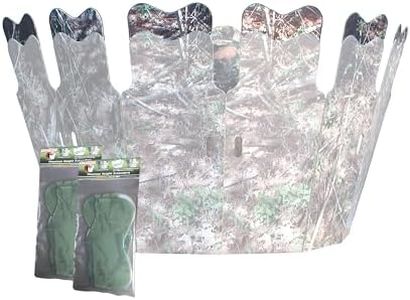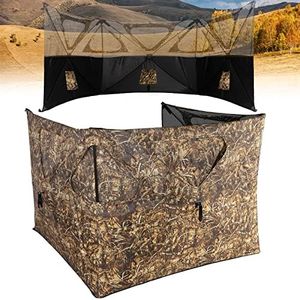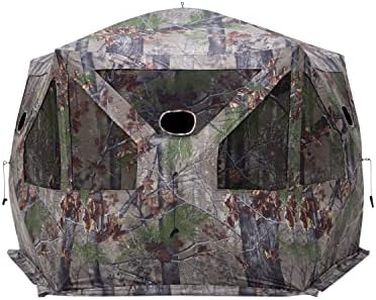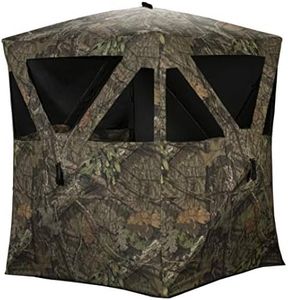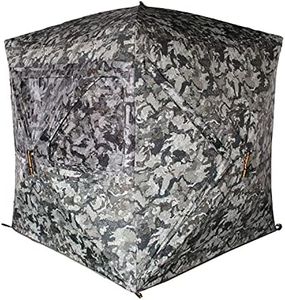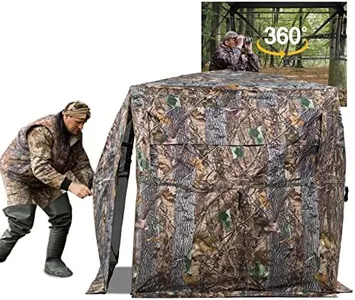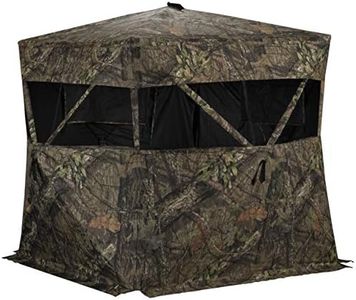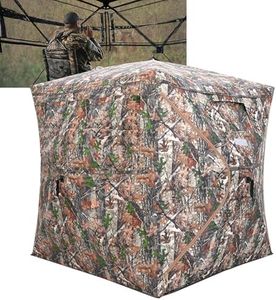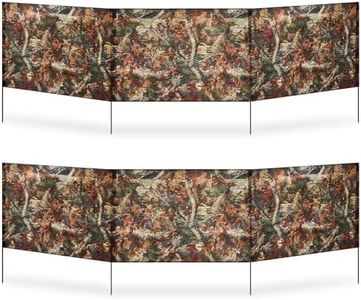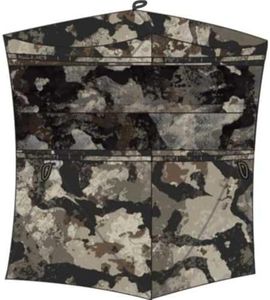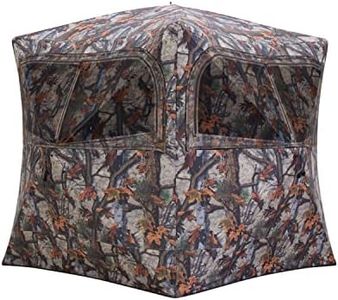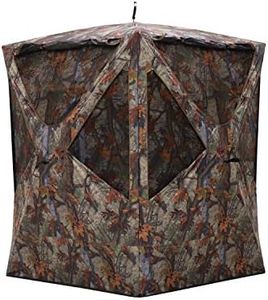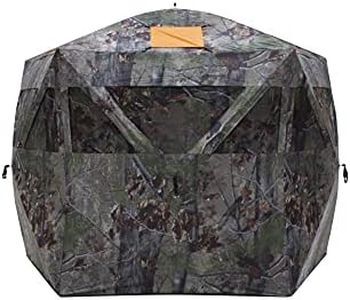We Use CookiesWe use cookies to enhance the security, performance,
functionality and for analytical and promotional activities. By continuing to browse this site you
are agreeing to our privacy policy
10 Best Ground Blinds
From leading brands and best sellers available on the web.Buying Guide for the Best Ground Blinds
Selecting the right ground blind is key to a comfortable and successful hunting experience. The ground blind you choose should match your hunting style, the environments you frequent, and the number of people or gear you intend to fit inside. Knowing what features matter most will help you be confident and effective, whether you are a seasoned hunter or trying blinds for the first time.Size and CapacitySize and capacity refer to how many people and how much gear can fit inside the blind. It's important because a cramped blind can be uncomfortable and make it harder to move or shoot, while an oversized blind can be tough to conceal. Smaller blinds (1-2 person) are best for solo or minimalist hunters and easier to hide, while medium (2-3 person) options balance space and concealment. Larger blinds (3+ people) allow more room for groups or lots of equipment but require more effort to blend into the environment. Consider how many people will join you and what equipment will be inside to determine the right size for your needs.
Portability and WeightPortability and weight describe how easy it is to carry and set up the blind. Light, easily folded and compact blinds are ideal if you move a lot or hunt in remote areas, but they may offer less space or fewer features. Heavier and less portable blinds may provide more comfort and durability, making them better for longer stays or if you don't have to move often. Review your hunting habits—if you walk long distances, choose a lighter option, but if you stay in one spot, a heavier blind might be suitable.
Camouflage and Blind MaterialThis refers to the appearance and construction of the blind, which are vital for staying hidden and protected from the elements. Material with effective camouflage helps blend into your hunting surroundings, and strong, weather-resistant fabric offers shelter from wind and rain. Different camo patterns suit different environments, such as fields, woods, or marshes. When picking, match the camo pattern to your typical hunting terrain, and ensure the material is durable enough for your climate and frequency of use.
Window ConfigurationWindow configuration means the number, size, shape, and placement of openings in the blind. This is important because it affects your visibility, shooting angles, and ability to stay unseen. Some blinds have multiple windows for nearly 360-degree views, while others focus on fewer but larger or lower-profile windows for increased concealment. Pick a configuration that offers good sight lines and shooting angles for your preferred weapon, whether bow or firearm, while still keeping you hidden from wildlife.
Ease of SetupThis describes how quickly and simply you can assemble or disassemble the blind. Quick-setup models are great for mobile hunters or those who don't want to spend a lot of time dealing with complicated instructions. Traditional or more robust blinds might require more assembly but can provide greater stability. If you hunt alone or frequently move locations, opt for a blind that is easy for one person to set up; if you hunt from the same spot all season, setup speed might matter less.
Weather Resistance and VentilationWeather resistance is how well the blind protects from rain, wind, or even snow, while ventilation is about airflow to prevent stuffiness or fogged windows. Good weather resistance ensures comfort and dryness, while proper ventilation keeps air fresh and prevents the inside from getting hot or musty. Choose stronger weatherproofing for tough conditions or longer stays, and make sure there's enough ventilation for your climate, especially in warmer regions.
